
Creating a beautiful outdoor space can be challenging, especially in areas where fires happen often.
We can use special plants that don’t need much water and are safe from fires. These plants make our garden look nice and also help prevent fires.
We can also add hard things like rocks and paths to our garden to make it look interesting and prevent fires.
By using these ideas, we can make a garden that is both pretty and safe. This way, we can enjoy our outdoor space without worrying about fires.
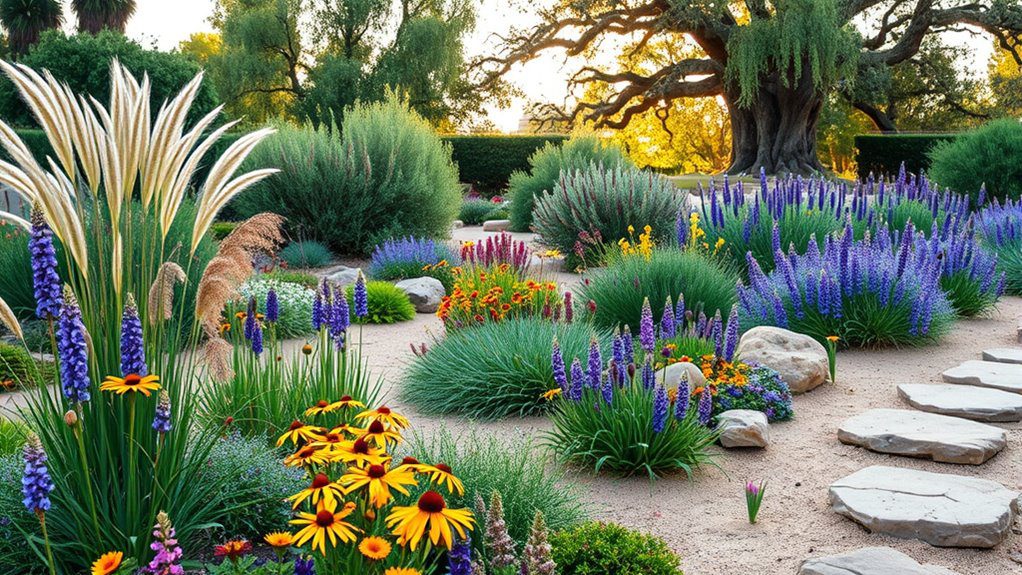
Embracing native plants in fire-resistant gardens is a smart strategy for enhancing landscape resilience. Native plants are adapted to local climates and soil conditions, making them more drought-resistant and easier to maintain. Their fibrous root systems help retain soil moisture, reducing the likelihood of fire ignition. Additionally, these plants often have lower oil content, minimizing flammability. By incorporating native species, gardeners can create beautiful, sustainable landscapes that support local ecosystems while mitigating fire risks.
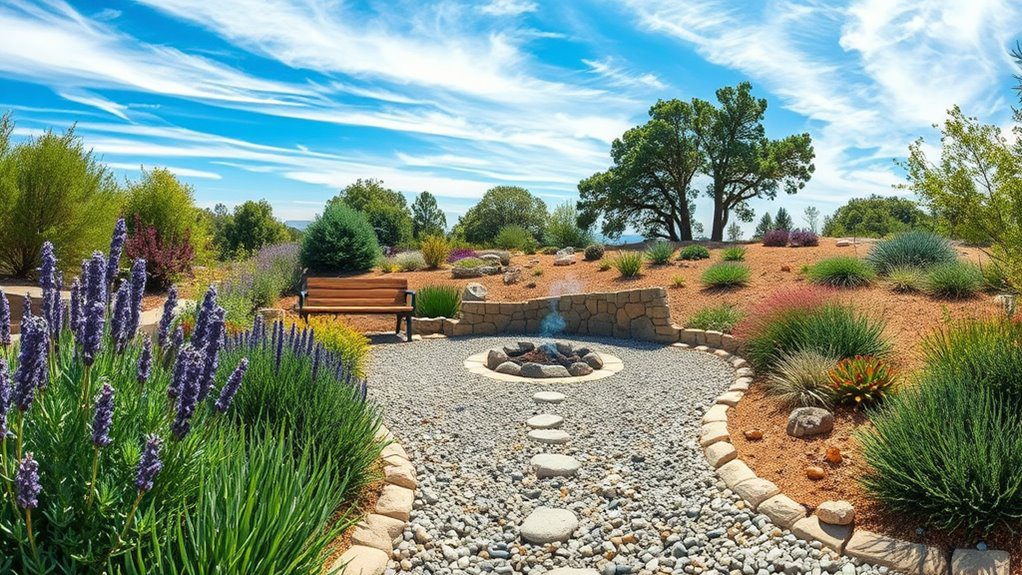
Designing a fire-wise landscape involves strategically planning your garden to minimize fire hazards while maximizing aesthetic appeal. This includes selecting native, drought-resistant plants that are less likely to ignite, creating defensible space by maintaining vegetation, and using non-combustible materials for hardscaping. Incorporating firebreaks and choosing plants with high moisture content can further protect your property while enhancing biodiversity. Thoughtful design not only safeguards against wildfires but also promotes a resilient ecosystem.
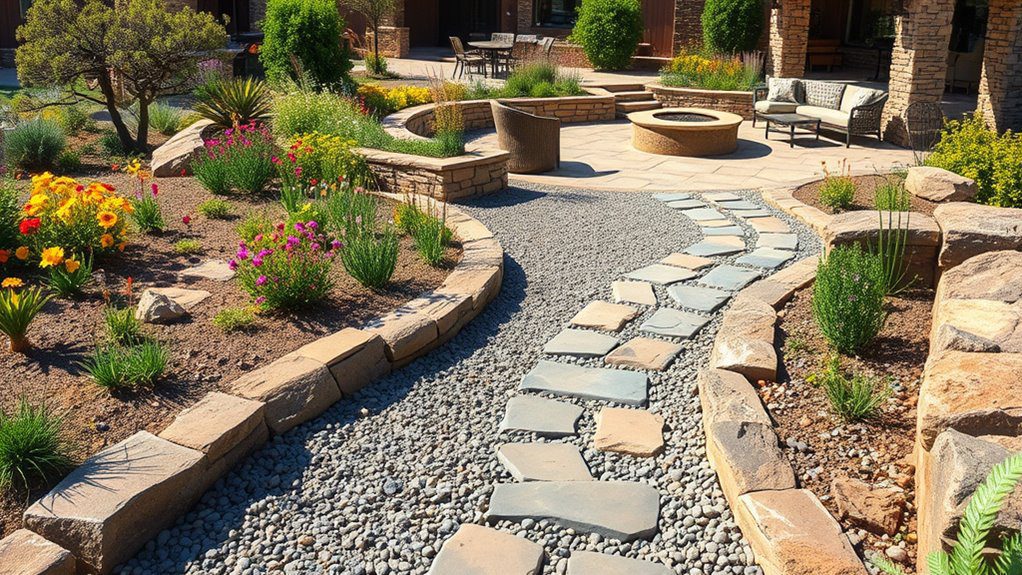
Incorporating hardscaping elements into fire-resistant gardens is essential for creating defensible spaces and enhancing aesthetics. Features such as gravel pathways, stone patios, and brick walls can help slow the spread of fire, while also providing structure to the landscape. Using non-combustible materials like concrete, tile, or natural stone can reduce fire hazards. Additionally, strategically placed hardscaping not only adds visual interest but also creates barriers that can protect more vulnerable plants from flames.
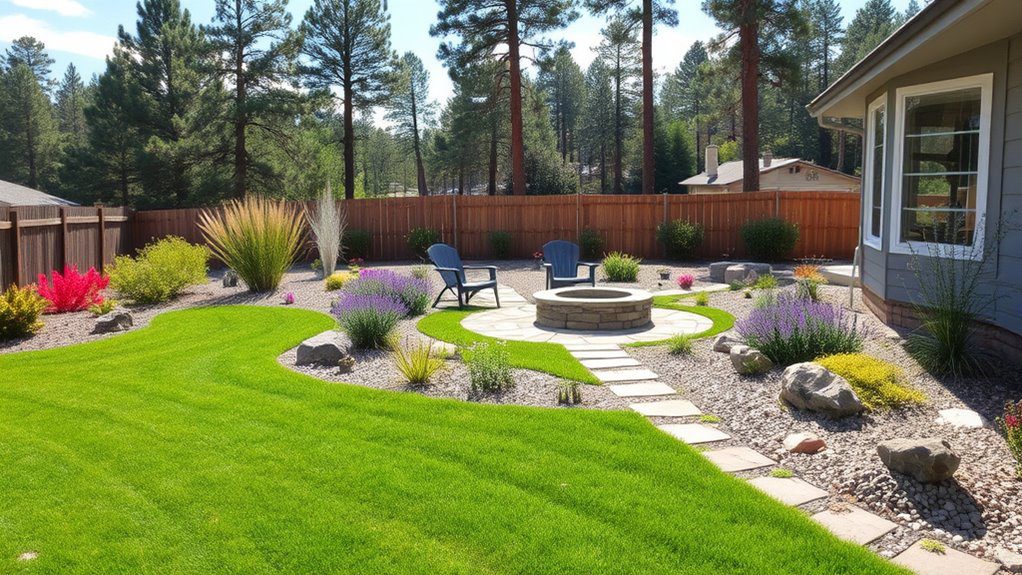
Creating defensible space around your home is essential for minimizing wildfire risk. This involves maintaining a buffer zone typically extending 30 to 100 feet from your property. Clear away flammable materials, such as dead plants, leaves, and firewood. Opt for fire-resistant plants and landscaping features that can slow down or stop the spread of fire. Strategically spaced trees and shrubs help prevent fire from jumping to your home, while maintaining a well-watered garden enhances safety.
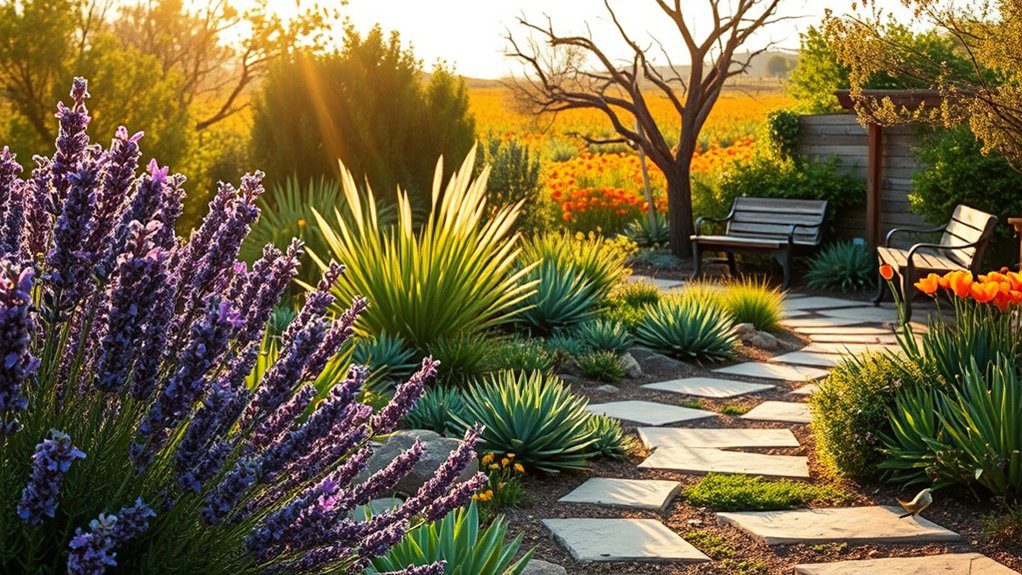
Utilizing low-maintenance, drought-tolerant varieties is essential for creating a fire-resistant garden. These plants not only conserve water but also thrive in arid conditions, reducing the risk of fire through their ability to withstand heat and remain green longer. Select native species and resilient perennials that require minimal upkeep and irrigation. Incorporating such plants not only promotes sustainability but also enhances the aesthetic appeal of your landscape while protecting it from fire hazards.
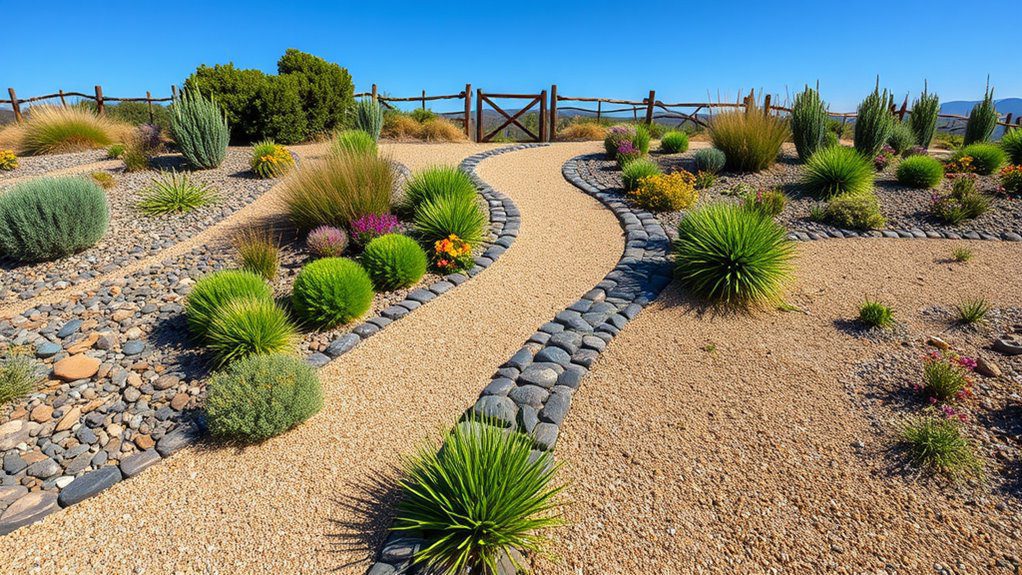
Implementing firebreaks with gravel and stone is an effective way to enhance the fire resistance of gardens, especially in fire-prone areas. These non-combustible materials create a barrier that can slow down or redirect the spread of wildfires. By strategically placing gravel or stone pathways and borders, gardeners can diminish fuel load near plants and structures. Additionally, incorporating these elements adds an aesthetic appeal, blending functional safety with visual beauty in outdoor spaces.
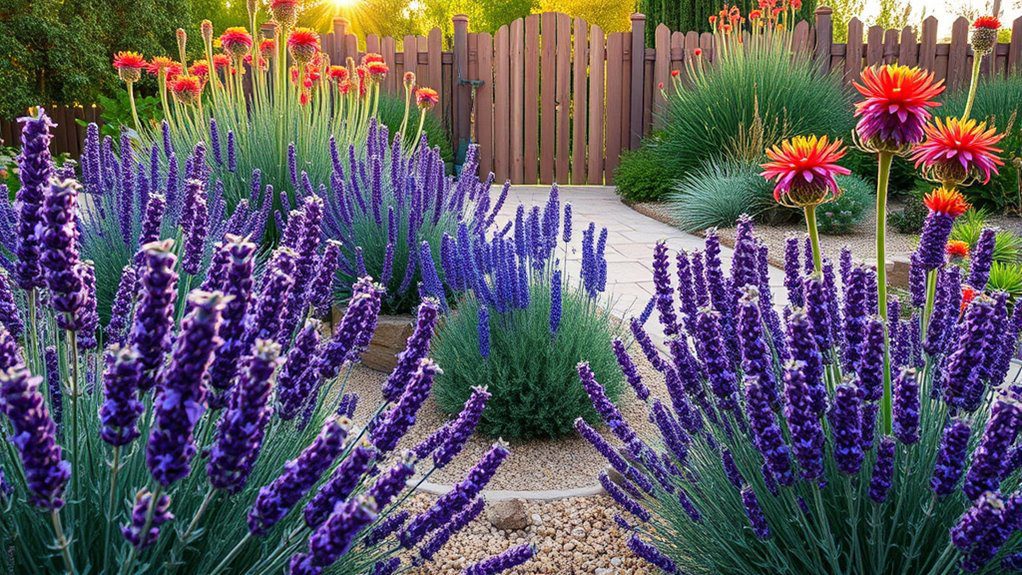
When creating a fire-resistant garden, selecting hardy perennials is essential. These resilient plants not only withstand drought conditions but also reduce the risk of fire spreading to your home. Look for varieties such as lavender, salvia, and agastache, which thrive in arid environments and possess low sap and moisture content. By incorporating these durable plants, you can create a vibrant, sustainable garden that enhances curb appeal while offering protection against wildfires.
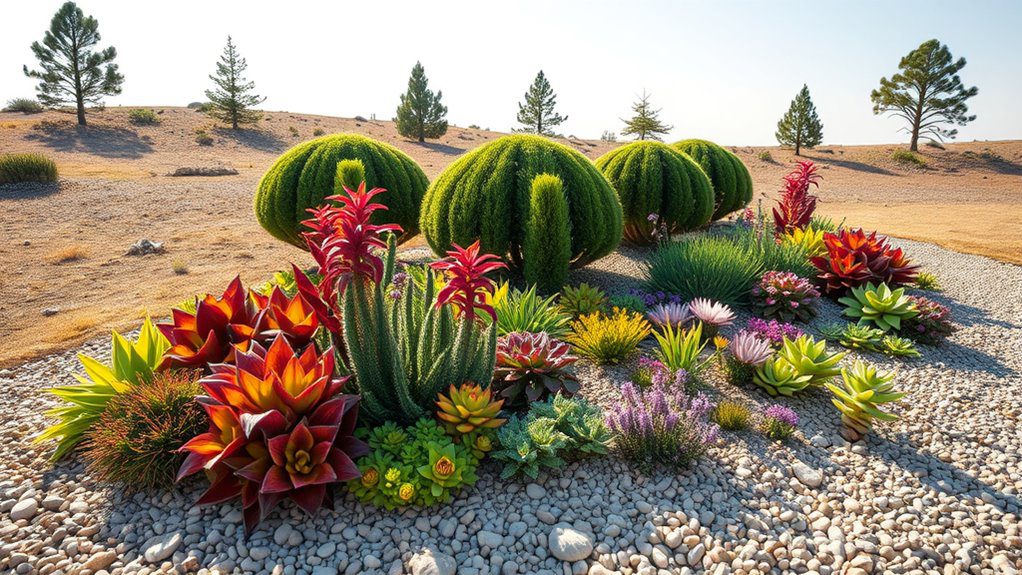
Using mulch wisely in fire-resistant gardens serves as an effective barrier against flames and heat. Opt for non-flammable materials like gravel, rocks, or rubber mulch instead of organic options that can ignite. Apply a thick layer, ideally 3-4 inches, around plants to suppress weeds, retain moisture, and prevent soil erosion. Additionally, keep mulch at least 12 inches away from trees and shrubs to minimize fire risk while enhancing aesthetic appeal and plant health.
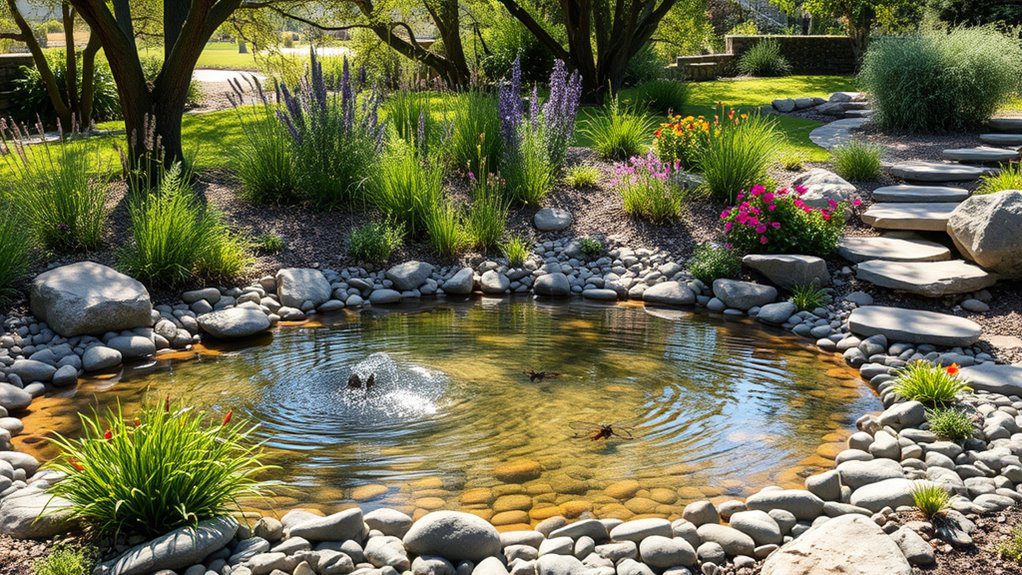
Incorporating water features into fire-resistant gardens not only enhances aesthetic appeal but also aids in moisture management. Ponds, fountains, or rain gardens can retain and circulate water, creating a humid microclimate that helps prevent the spread of flames during dry seasons. Additionally, these features provide habitats for beneficial wildlife and can be strategically placed to act as natural barriers against fire, ensuring a safer environment while adding serenity to the landscape.
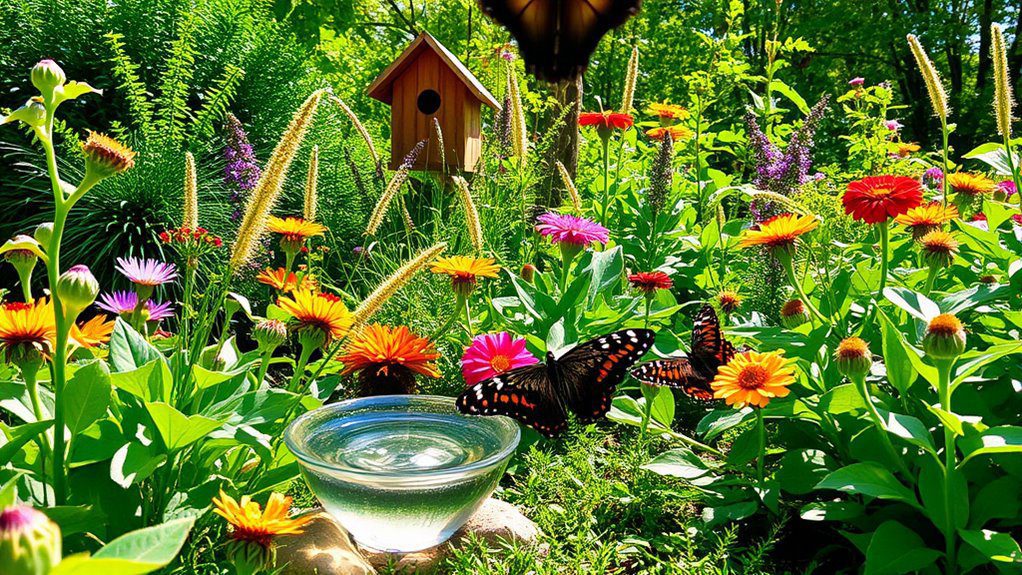
Attracting beneficial wildlife to your fire-resistant garden not only enhances biodiversity but also promotes natural pest control and pollination. Incorporating native plants, shrubs, and trees provides habitat and food sources for birds, bees, and beneficial insects. Including features like shallow water sources and nesting boxes can further entice wildlife. By creating a thriving ecosystem, your garden becomes more resilient to fire while supporting local species and fostering a healthy environment.
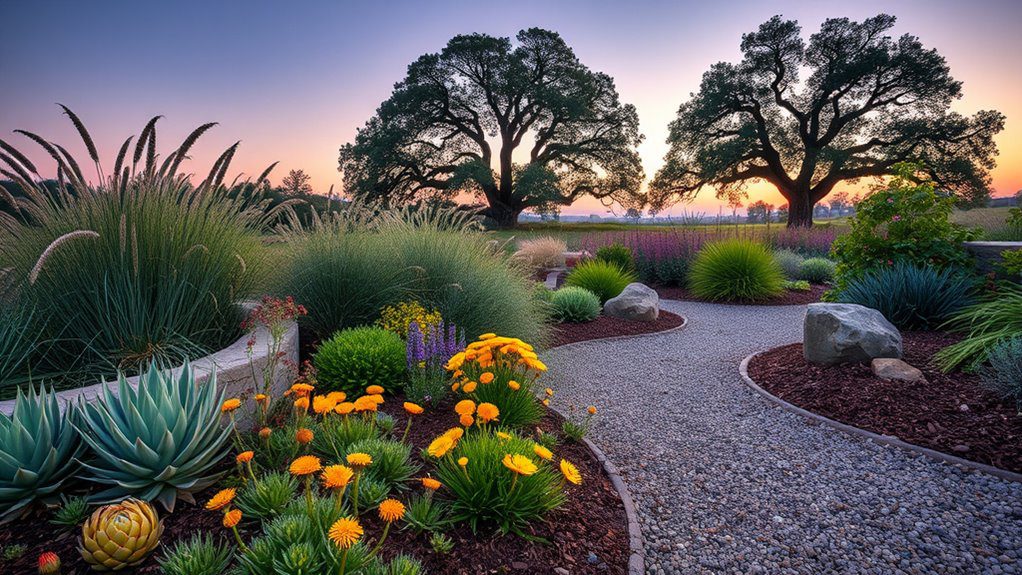
Planning for seasonal changes and fire behavior is essential for creating a fire-resistant garden. Gardeners should consider drought-resistant plants, native species, and fire-retardant ground covers that thrive in local climates. Seasonal maintenance, such as regular pruning and clearing debris, helps reduce flammability. Understanding how seasonal winds and temperatures affect fire spread allows for strategic placement of plants and barriers, fostering a safer landscape while maintaining aesthetic appeal year-round.
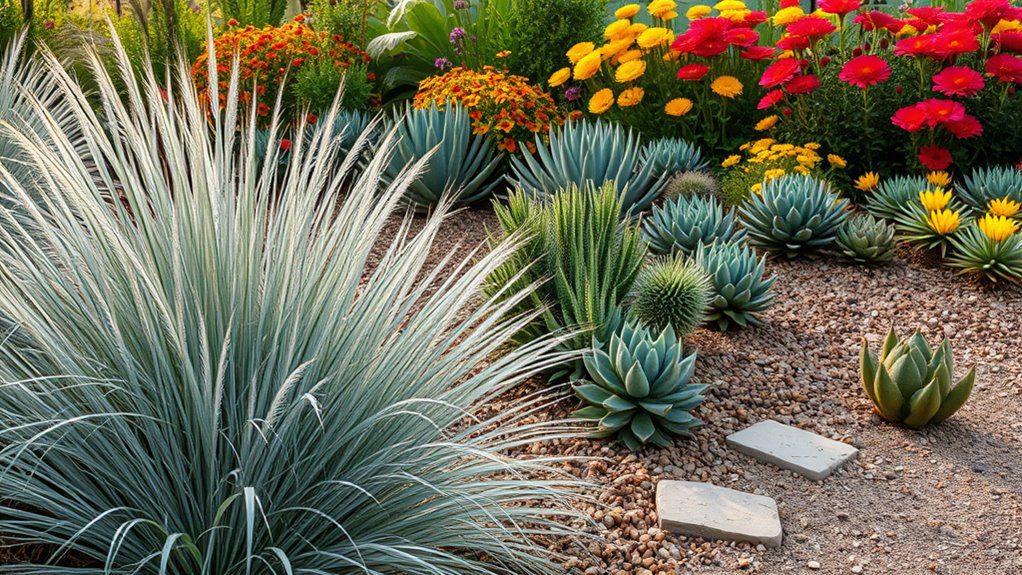
In designing fire-resistant gardens, mixing color and texture is essential for creating a visually enchanting landscape while maintaining safety. Incorporate a blend of drought-tolerant plants with varied foliage shapes and colors, such as silvery grasses, deep green succulents, and vibrant flowering perennials. This combination not only enhances aesthetic appeal but also guarantees that your garden thrives in low-water conditions, ultimately creating a resilient and beautiful outdoor space.
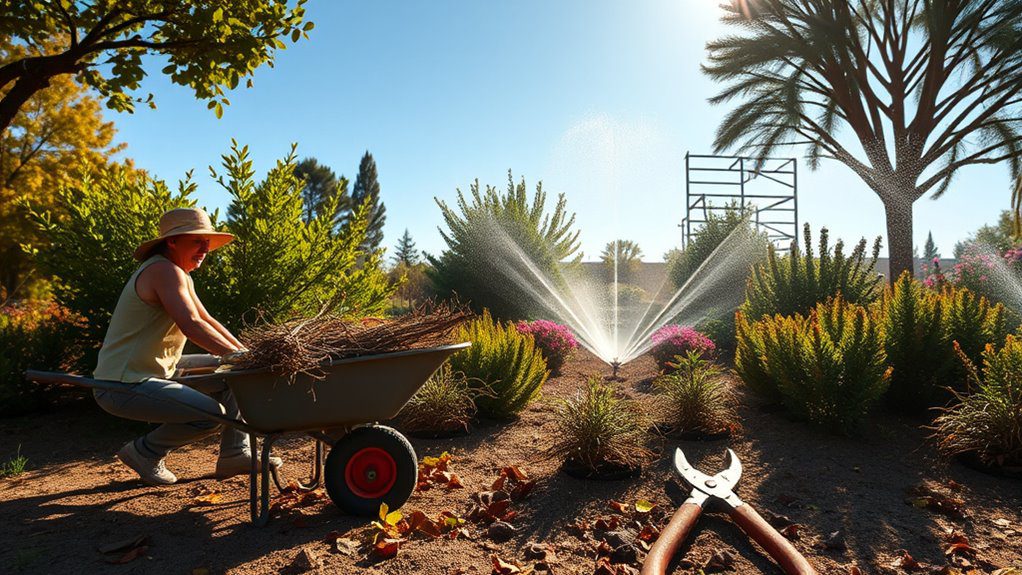
Committing to ongoing maintenance is essential for fire safety in gardens. Regularly checking and removing dead plants, dried leaves, and debris minimizes fuel sources that can ignite during a fire. Pruning overgrown shrubs and trees helps maintain an appropriate distance from potential fire hazards, while ensuring irrigation systems function properly keeps plants healthy and hydrated. By establishing a routine and remaining vigilant, gardeners can greatly reduce the risk of fire damage in their landscapes.
By integrating native, drought-resistant plants and hardscaping elements, you can create a stunning, fire-resistant garden that not only enhances your home’s safety but also its beauty. Did you know that landscapes with more native plants can reduce fire intensity by up to 50%? This striking statistic underscores the importance of thoughtful design in promoting fire safety while attracting beneficial wildlife. With commitment and care, you can cultivate a vibrant outdoor oasis that thrives and protects year-round.

Don't let aphids, slugs, and caterpillars ruin another plant. Take back control with simple, natural methods that actually work.